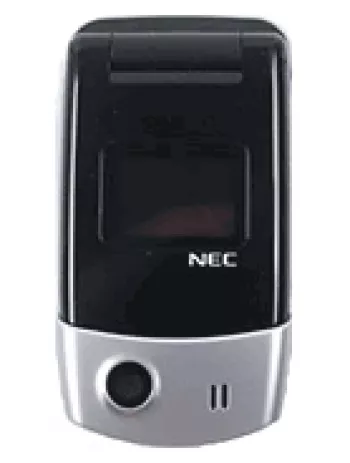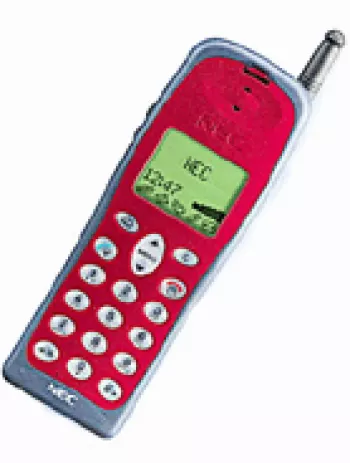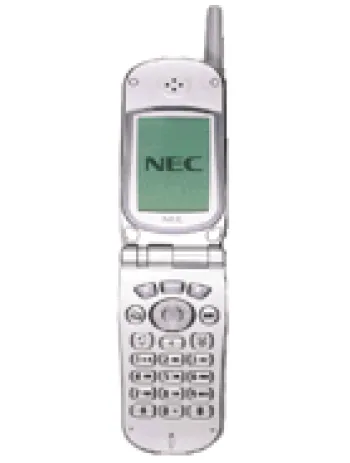
Overview of the NEC DB4000
The NEC DB4000 was introduced in the market in the year 2000, during a time when mobile phones were primarily used for voice communication and basic messaging. Unlike today's smartphones packed with multifunctional capabilities, this device was designed as a basic feature phone, largely focusing on usability and basic telecommunication features. It represented an era where endurance and simplicity were cherished over advanced technical specifications.
Design and Build
With dimensions of 120 x 42 x 22 mm, the NEC DB4000 was compact, fitting comfortably in the user's hand. Weighing just 99 grams, it was lightweight and portable, suitable for its time when bulky devices were not preferred. The phone was designed with a Mini-SIM slot and came in a metallic finish, offering a modern and stylish look for the early 2000s.
Display
The device featured an alphanumeric display with a resolution of 97 x 59 pixels and a 5:3 ratio. While it lacked the vibrancy and clarity of contemporary screens, it was sufficient for displaying essential functions like dialing numbers, sending text messages, and noting incoming call details.
Network and Connectivity
The NEC DB4000 supported GSM technology, operating on the 900 and 1800 bands. At a time when mobile internet was not yet prevalent, the phone did not support GPRS or EDGE for data connectivity. It was designed purely for voice calls and SMS messaging, reflecting the needs and technology of its era.
Memory and Storage
The phone could store up to 100 contacts in its phonebook, which was adequate for its intended use. It maintained records of the last 10 dialed, received, and missed calls, helping users keep track of their recent communications. There was no card slot available, emphasizing its feature phone nature, which did not require additional storage.
Sound and Alerts
Unlike modern devices with sophisticated audio systems, the NEC DB4000 did not include a loudspeaker or a 3.5mm headphone jack. It offered vibration alerts and monophonic ringtones as its primary methods for notifying users of incoming calls and messages.
Battery Life
The battery was a removable Li-Ion type with a capacity of 550mAh, which could provide approximately 195 hours of standby time and up to 330 minutes of talk time. This was considered impressive battery performance at the time, allowing users to go days without needing to recharge their phone.
Messaging and Features
SMS was the main form of messaging supported on the NEC DB4000. It did not include a browser or modern features like games or multimedia capabilities. However, it came equipped with useful basic features such as a clock, an alarm, and support for 18 different languages. Despite the lack of advanced software, the phone served its purpose as a reliable communication tool.
Conclusion
In conclusion, the NEC DB4000 served as an essential tool for communication in the early 2000s, exemplifying a time when mobile devices were transitioning from straightforward telecommunication instruments to more advanced gadgets. While limited by today's standards, it was both practical and sufficient for users during its time. Its simple design and focus on core functionalities remind us of the foundation upon which modern mobile technology is built.
Key Features of NEC DB4000
- Compact and lightweight design: 120 x 42 x 22 mm, 99 g
- GSM 900 / 1800 technology
- Removable Li-Ion battery with up to 195 hours standby
- 330 minutes talk time
- Support for SMS messaging
- Phonebook capacity for 100 contacts
- Multiple language support: 18 languages
- Monophonic ringtones with vibration alerts
- Classic Metallic color
- Mini-SIM compatibility
Disadvantages of NEC DB4000
- GPRS and EDGE not supported for internet connectivity.
- Discontinued status means no longer receiving updates or support.
- Alphanumeric display with low resolution (97 x 59 pixels).
- No card slot for memory expansion.
- Limited phonebook capacity with only 100 contacts.
- Absence of modern features like loudspeaker, 3.5mm jack, WLAN, Bluetooth, and positioning (GPS).
- No camera for capturing photos or videos.
- No games available on the device for entertainment.
- Lacks support for Java applications, limiting software compatibility.
- No USB connectivity for data transfer.
- Outdated GSM 900/1800 network technology.




View Also
More Phones
All Rights Reserved +14266 Phones © Mobilawy 2025

























